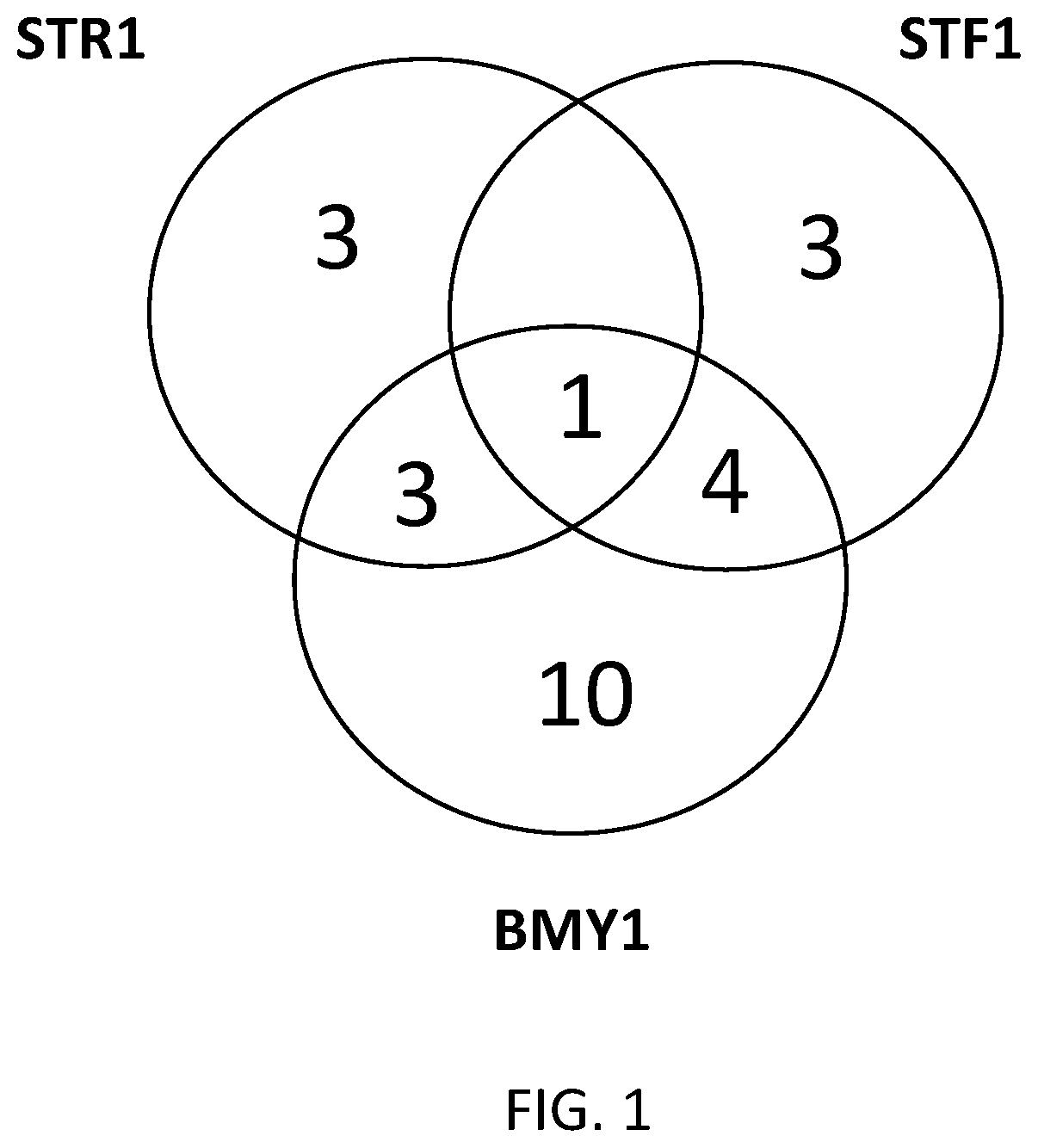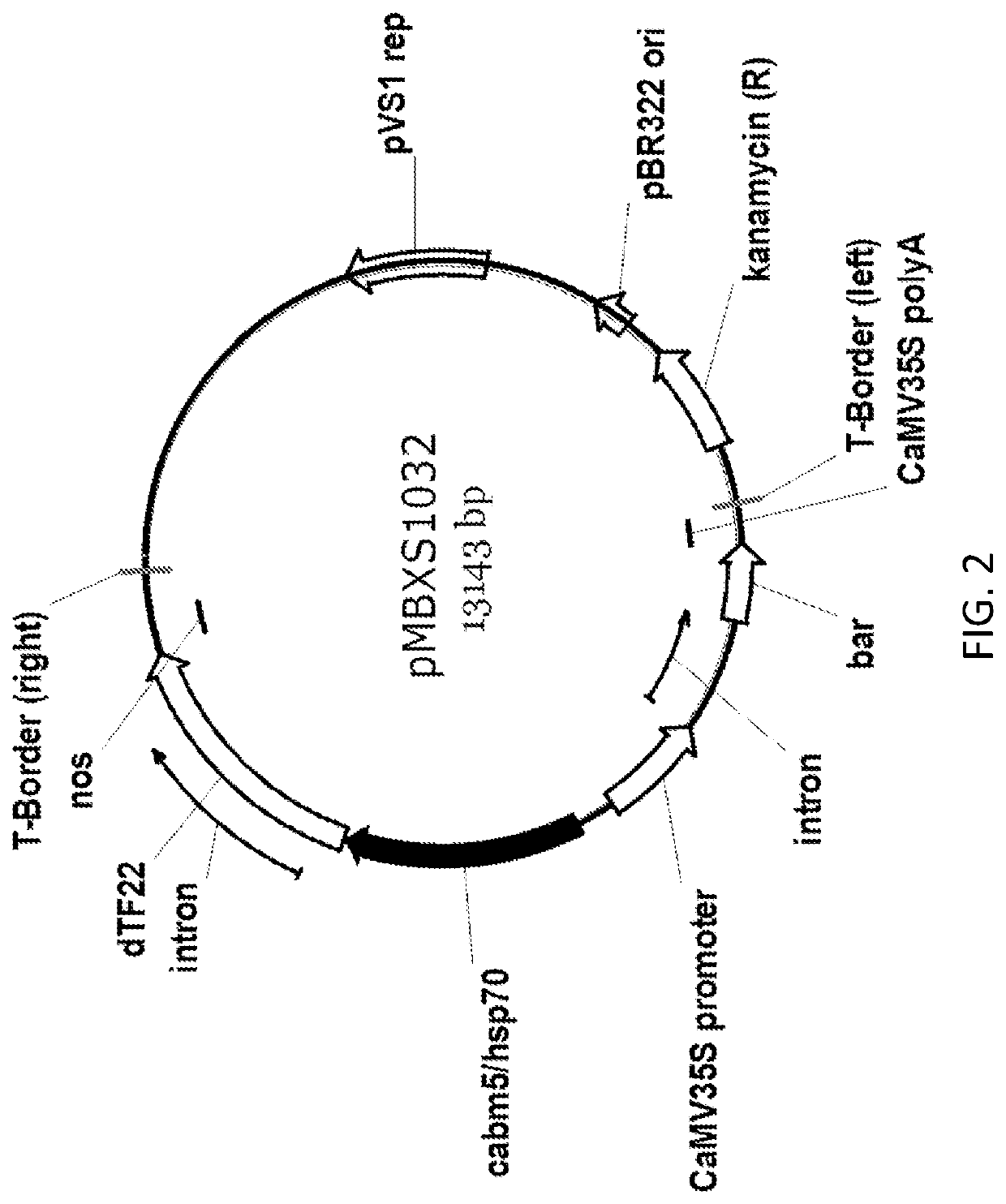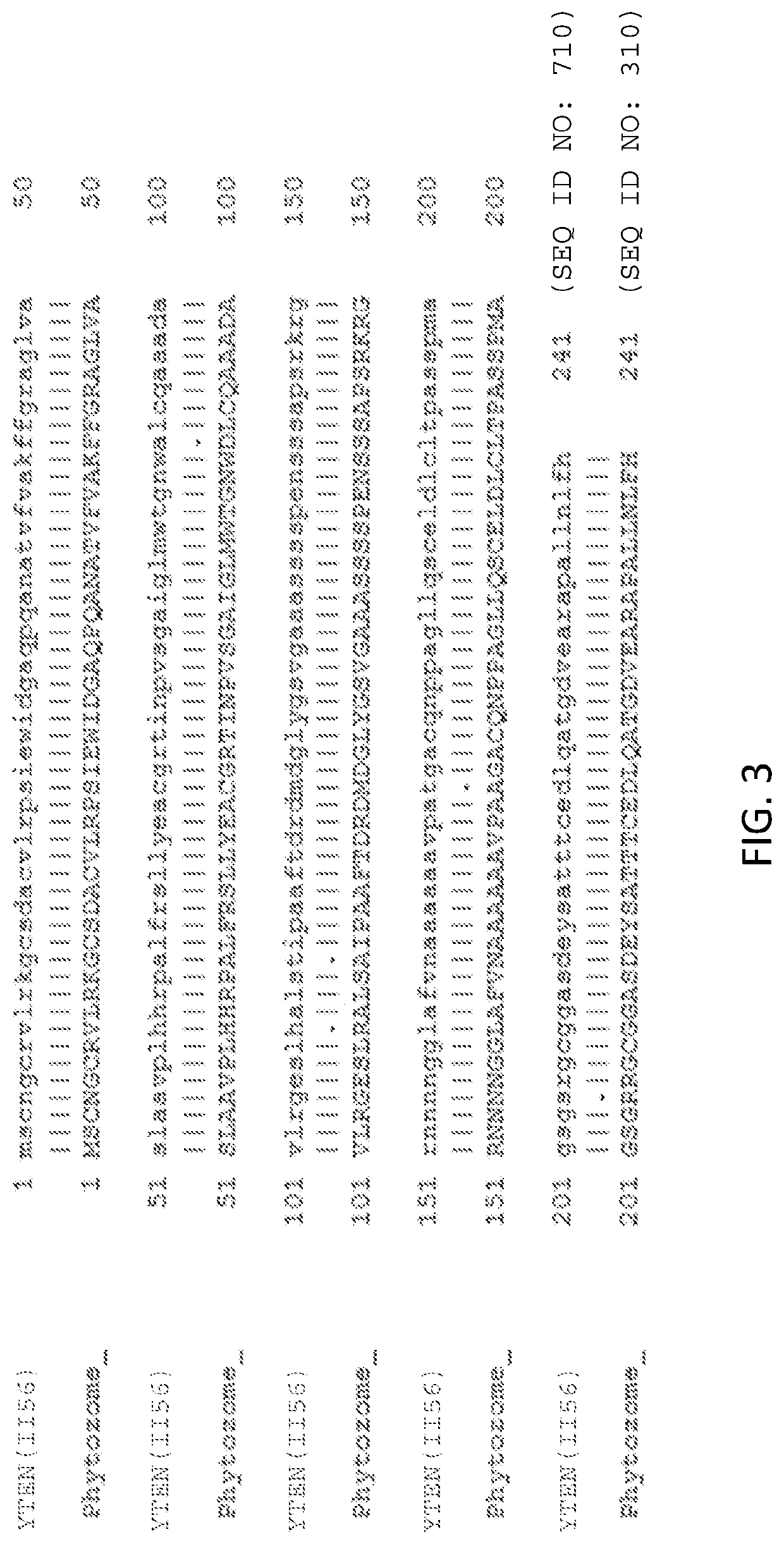Genes and gene combinations for enhanced crops
a technology of enhanced crops and gene combinations, applied in the field of gene targets and genome editing materials, can solve the problems of high cost, high cost, and high processing time, and achieve the effects of reducing photorespiration rates, reducing cost, and increasing biomass yield or conten
- Summary
- Abstract
- Description
- Claims
- Application Information
AI Technical Summary
Benefits of technology
Problems solved by technology
Method used
Image
Examples
example 1
ation of Downregulated Transcription Factors in Switchgrass Lines Expressing Global Transcription Factors
[0219]Transgenic overexpression of global transcription factors STR1, STIF1, and BMY1 (US 2016 / 0194650; WO2014100289) was previously shown to increase yield in switchgrass. Although the use of the global transcription factors is useful for the production of biomass, for most crops it is more important to increase the yield of the harvested product which is seed. It is also important to be able to identify the downstream genes responsible for the overall impact of the global transcription factors to be able to develop plants with traits useful for the particular crop of interest without unwanted outcomes. These genetically engineered switchgrass lines are invaluable sources of new information for identifying other transcription factors genes whose altered expression or activity was important for this yield increase. Global gene expression profiling using an Affymetrix switchgrass ...
example 2
l Characterization of dTF22 by Overexpression of its Coding Sequence in Switchgrass
[0226]To validate the functional phenotype of dTF22, a binary vector, pMBX1032 (FIG. 2, SEQ ID NO: 25), was produced that expressed dTF22 from the maize chlorophyll a / b-binding protein promoter (Sullivan et al., 1989, Mol. Gen. Genet. 215, 431-440). This promoter is equivalent to the cab-m5 promoter described in later work (Becker et al., 1992, Plant Mol. Biol. 20, 49-60). The cab-m5 promoter is fused to the hsp70 intron (Brown and Santino, 1997, U.S. patent Ser. No. 05 / 593,874) for enhanced expression in monocots. The dTF22 gene used in the expression construct was amplified from genomic DNA from switchgrass genotype YTEN(II56) and contains the native intron. Alignment of the amino acid sequence of the gene isolated from YTEN(II56) to the switchgrass sequence in Phytozome showed differences in five amino acids, likely due to genotype used for isolation of the gene (FIG. 3). Immature inflorescence-der...
example 3
ation of Orthologs of dTF22 in Rice and Modification or Inactivation of dTF22 Expression Using CRISPR / Cas9 Genome Editing
[0229]The switchgrass gene was used to identify the rice ortholog of dTF22 as follows. The switchgrass amino acid sequence of dTF22 (SEQ ID NO: 310) was used as a query against the rice proteome using the BLASTP search (http: / / rice.plantbiology.msu.edu / analyses_search_blast.shtml). The hits were ranked in order of the alignment score and the top hit, LOC_Os03g41330 (Gene: SEQ ID NO: 210, Protein: SEQ ID NO: 465), was identified as the best ortholog. It will be apparent to those skilled in the art to target the additional orthologs of SEQ ID NO: 210 for reduced expression and this is included in the scope of this invention.
[0230]For CRISPR / Cas9 genome editing of the rice dTF22, seven sgRNA sequences were designed to target various regions of the promoter and or coding sequence of the gene to either reduce expression or to inactivate the rice dTF22 gene. SEQ ID NO: ...
PUM
| Property | Measurement | Unit |
|---|---|---|
| Tm | aaaaa | aaaaa |
| temperatures | aaaaa | aaaaa |
| volume | aaaaa | aaaaa |
Abstract
Description
Claims
Application Information
 Login to View More
Login to View More - R&D
- Intellectual Property
- Life Sciences
- Materials
- Tech Scout
- Unparalleled Data Quality
- Higher Quality Content
- 60% Fewer Hallucinations
Browse by: Latest US Patents, China's latest patents, Technical Efficacy Thesaurus, Application Domain, Technology Topic, Popular Technical Reports.
© 2025 PatSnap. All rights reserved.Legal|Privacy policy|Modern Slavery Act Transparency Statement|Sitemap|About US| Contact US: help@patsnap.com



